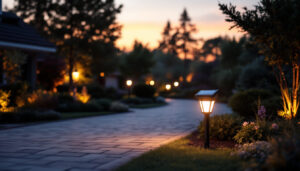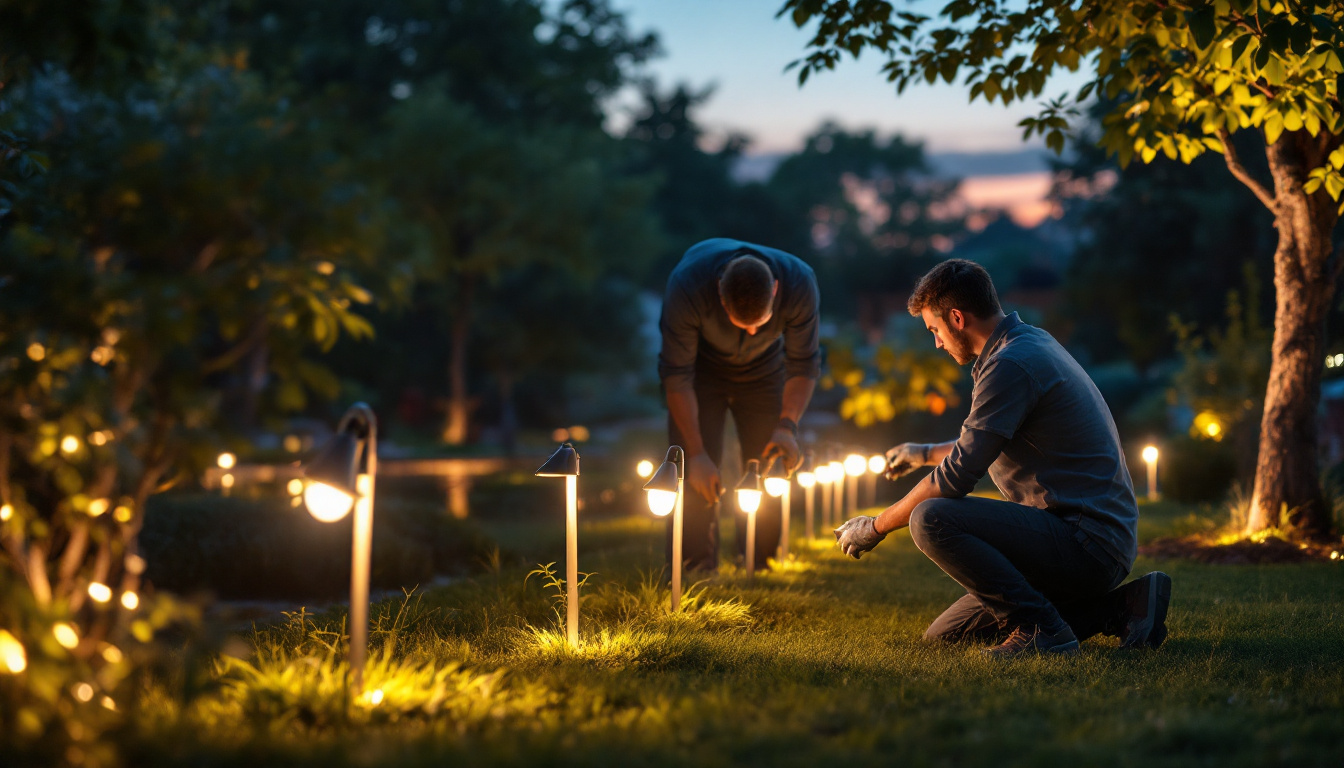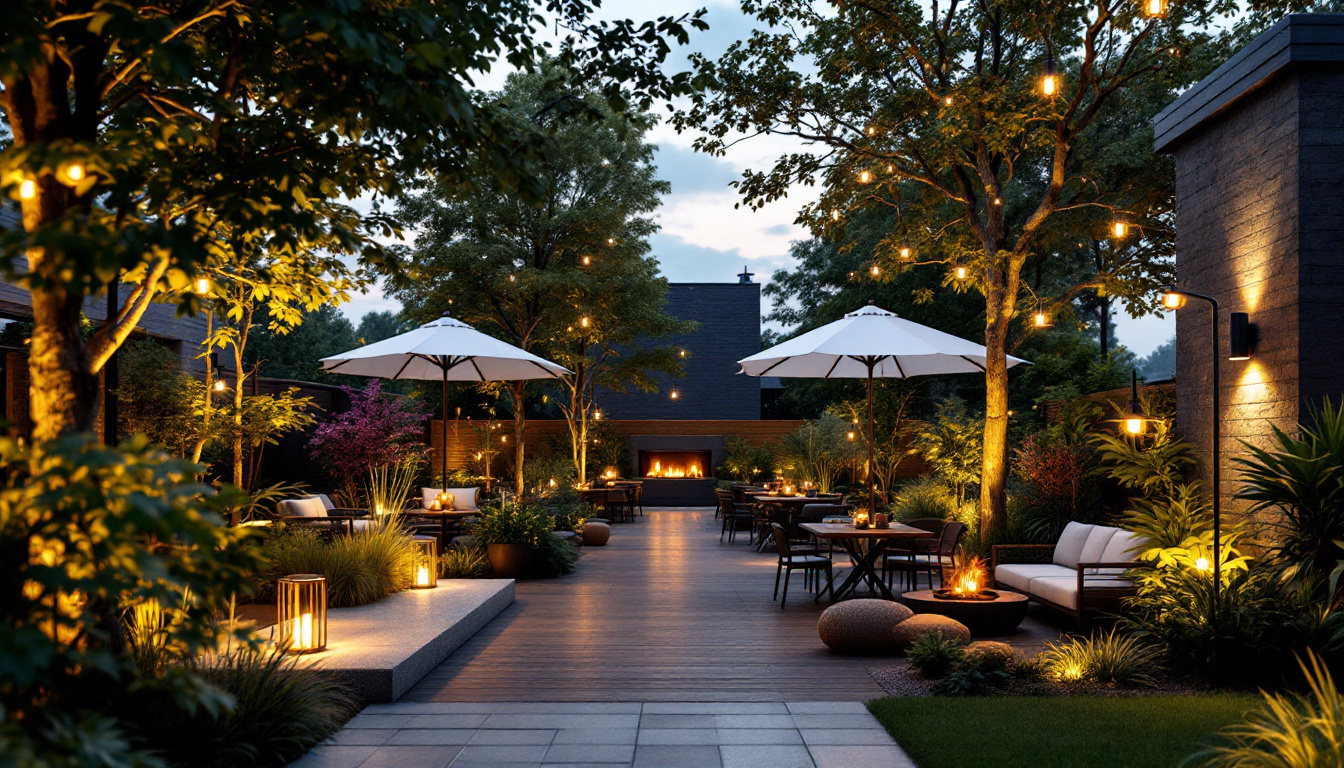

In the world of landscape lighting, the artistry of illumination goes hand in hand with technical expertise. For lighting contractors, training a team that excels in both design and execution is crucial to delivering exceptional results. This article explores effective strategies for training your team in landscape lighting, ensuring they possess the skills and knowledge to create stunning outdoor environments.
Before diving into advanced techniques, it’s essential for your team to grasp the fundamentals of landscape lighting. This includes understanding the various types of fixtures, the principles of light, and the different applications of lighting in outdoor spaces.
Landscape lighting comes in various forms, each serving a unique purpose. Common types include path lights, spotlights, floodlights, and wall sconces. Training should cover the characteristics of each fixture, such as their beam angles, lumen output, and ideal placement. This foundational knowledge allows team members to make informed decisions when designing lighting plans.
Additionally, it’s important to educate your team about energy-efficient options, such as LED lighting. Understanding the benefits of LEDs, including longevity and reduced energy consumption, can significantly impact the overall effectiveness of a landscaping project. Moreover, incorporating solar-powered fixtures can provide an eco-friendly alternative, reducing the need for electrical wiring and allowing for easier installation in remote areas.
Light behaves in specific ways that can enhance or detract from a landscape’s beauty. Training should encompass the principles of light, including intensity, color temperature, and direction. For instance, warm white light can create a cozy atmosphere, while cooler tones may evoke a more modern feel.
Understanding how light interacts with different surfaces—such as water, stone, and foliage—will empower your team to create dynamic lighting designs that enhance the natural beauty of the landscape. Encourage experimentation with various lighting techniques, such as uplighting, downlighting, and silhouetting, to see how they can transform a space. Additionally, exploring the concept of layering light can add depth and dimension to outdoor areas, allowing for a more immersive experience. By combining ambient, task, and accent lighting, your team can craft a harmonious balance that highlights key features while providing functional illumination for pathways and gathering spaces.
A well-thought-out lighting plan is critical for achieving the desired aesthetic and functionality. Training your team in design principles will enable them to create cohesive and effective lighting schemes.
The first step in designing a lighting plan is to assess the landscape. This involves evaluating the existing features, such as trees, pathways, and architectural elements. Encourage your team to take detailed notes and photographs during site visits, as these will serve as valuable references during the design process.
During the assessment, it’s also important to consider the intended use of the space. Is it a recreational area, a serene garden, or an entertainment space? Understanding the purpose will guide the lighting design, ensuring it meets the needs of the client while enhancing the landscape’s natural beauty. Additionally, factors such as the surrounding environment and potential light pollution should be taken into account. For instance, if the area is near a residential neighborhood, it may be necessary to implement measures that minimize glare and ensure that the lighting is not disruptive to nearby homes.
Once the assessment is complete, your team can begin creating a lighting layout. This involves selecting appropriate fixtures and determining their placement. Training should emphasize the importance of spacing fixtures evenly to avoid overly bright or dark areas.
Utilizing software tools for design can enhance accuracy and efficiency. Familiarize your team with design software that allows them to visualize the lighting before installation. This not only aids in planning but also helps in presenting ideas to clients, ensuring they are on board with the proposed design. Furthermore, consider incorporating different lighting techniques, such as uplighting, downlighting, and accent lighting, to create layers of illumination that add depth and interest to the landscape. Each technique can highlight specific features, such as the texture of tree bark or the architectural details of a building, providing a dynamic visual experience that evolves throughout the night.
Effective installation techniques are vital for ensuring the longevity and performance of landscape lighting systems. Training your team in best practices will minimize issues and enhance the overall quality of their work.
Knowledge of electrical systems is crucial for safe and effective installation. Your team should be trained in the basics of low-voltage systems, including wiring, transformers, and circuit design. Emphasizing safety protocols during installation can prevent accidents and ensure compliance with local regulations.
Hands-on training sessions can be particularly beneficial. Allow team members to practice wiring techniques and familiarize themselves with the tools and equipment they will be using on the job. This practical experience will build their confidence and competence in handling electrical components.
Proper fixture placement and angling are key to achieving the desired lighting effects. Training should cover techniques for positioning fixtures at optimal heights and angles to create the best illumination. For example, uplighting trees can create dramatic shadows and highlight their structure, while downlighting can provide a soft, ambient glow along pathways.
Encourage your team to consider factors such as the surrounding environment and the desired mood when placing fixtures. Experimentation with different placements can yield surprising and beautiful results, enhancing the overall landscape.
Even the best-installed landscape lighting systems require regular maintenance. Training your team to perform routine checks and troubleshoot common issues will ensure the longevity of the systems and client satisfaction.
Establishing a routine maintenance schedule is essential for keeping landscape lighting systems in top condition. Your team should be trained to inspect fixtures for damage, clean lenses, and check connections regularly. This proactive approach can prevent minor issues from escalating into significant problems.
Encourage your team to educate clients about the importance of maintenance. Providing clients with a simple checklist for seasonal maintenance can enhance their experience and ensure the lighting system remains effective throughout the year.
Training should also include troubleshooting techniques for common issues, such as flickering lights, inconsistent brightness, or complete fixture failure. Your team should be familiar with the steps to diagnose problems, such as checking connections, testing transformers, and replacing bulbs.
Hands-on training sessions can simulate real-world scenarios, allowing team members to practice their troubleshooting skills. This experience will prepare them to address issues efficiently and effectively in the field.
Effective communication with clients is a vital aspect of any successful landscape lighting project. Training your team to communicate clearly and confidently can enhance client relationships and lead to repeat business.
Your team should be equipped to present design ideas to clients in a way that is both informative and engaging. Training should cover how to create visual presentations that highlight the proposed lighting scheme, including mock-ups or renderings if possible.
Encourage team members to articulate the benefits of the proposed design, such as improved safety, enhanced aesthetics, and energy efficiency. This not only helps clients understand the value of the project but also builds trust in your team’s expertise.
Once a project is complete, educating clients on how to maintain their landscape lighting systems is essential. Training your team to provide clear instructions on routine maintenance and troubleshooting can empower clients to take care of their systems effectively.
Providing clients with a maintenance guide or schedule can enhance their experience and satisfaction. This proactive approach will also encourage clients to reach out for future projects or referrals, knowing they can rely on your team for ongoing support.
The landscape lighting industry is constantly evolving, with new technologies and design trends emerging regularly. Training your team to stay updated with these changes will ensure they remain competitive and knowledgeable in their field.
Encourage your team to pursue continuing education opportunities, such as workshops, webinars, and industry conferences. These events provide valuable insights into the latest trends and technologies, allowing your team to bring fresh ideas to their projects.
Consider partnering with manufacturers or industry organizations to provide training sessions for your team. This not only enhances their knowledge but also strengthens relationships within the industry.
Networking with other professionals in the landscape lighting industry can provide valuable insights and inspiration. Encourage your team to engage with peers, join professional associations, and participate in online forums to share ideas and experiences.
Collaboration with other contractors or designers can also lead to innovative solutions and creative approaches to landscape lighting projects. Fostering a culture of collaboration within your team can inspire new ideas and enhance overall project outcomes.
Training your team in landscape lighting is an investment that pays dividends in the quality of work and client satisfaction. By focusing on the fundamentals, design principles, installation techniques, maintenance, and effective communication, your team will be well-equipped to excel in the field. Embrace the ongoing evolution of the industry, and encourage your team to stay informed and engaged. With the right training and support, your team can transform outdoor spaces into beautifully illuminated landscapes that enhance both functionality and aesthetics.
Ready to elevate your landscape lighting projects with the best in spec-grade lighting products? Look no further than LumenWholesale, where we provide contractors like you with top-quality lighting solutions at unbeatable wholesale prices. Say goodbye to local distributor markups and hello to a vast selection of industry-standard lighting that promises reliability and high performance. With free shipping on bulk orders, you can stock up on premium lighting without any hidden fees. Make your next project shine brighter by choosing Wholesale Lighting at the Best Value with LumenWholesale.

Discover how industrial kitchen light fixtures can transform your culinary space with enhanced illumination and style.

Discover the essential insights lighting contractors need to know about outdoor lighting fixtures.

Discover how to transform your studio with the perfect ceiling lights.

Explore the pros and cons of LED post lanterns compared to alternative lighting options in this insightful guide for lighting contractors.
Get notified when NEW deals are released.
Optimize your budget with wholesale discounts.
Only top-quality, specification-grade lighting products.
No additional costs at checkout - what you see is what you pay.
We understand the unique needs of contractors.